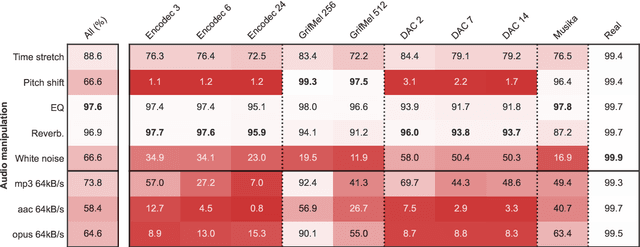Detecting music deepfakes is easy but actually hard
Paper and Code
May 07, 2024



In the face of a new era of generative models, the detection of artificially generated content has become a matter of utmost importance. The ability to create credible minute-long music deepfakes in a few seconds on user-friendly platforms poses a real threat of fraud on streaming services and unfair competition to human artists. This paper demonstrates the possibility (and surprising ease) of training classifiers on datasets comprising real audio and fake reconstructions, achieving a convincing accuracy of 99.8%. To our knowledge, this marks the first publication of a music deepfake detector, a tool that will help in the regulation of music forgery. Nevertheless, informed by decades of literature on forgery detection in other fields, we stress that a good test score is not the end of the story. We step back from the straightforward ML framework and expose many facets that could be problematic with such a deployed detector: calibration, robustness to audio manipulation, generalisation to unseen models, interpretability and possibility for recourse. This second part acts as a position for future research steps in the field and a caveat to a flourishing market of fake content checkers.
 Add to Chrome
Add to Chrome Add to Firefox
Add to Firefox Add to Edge
Add to Edge